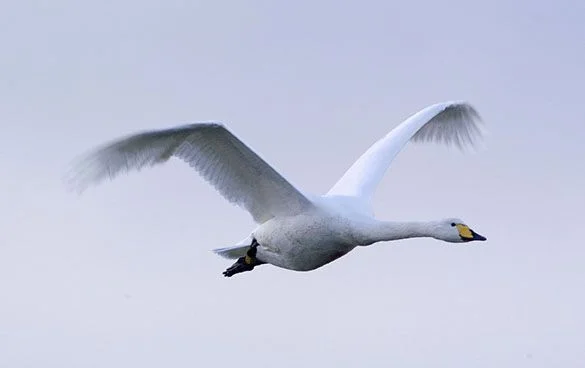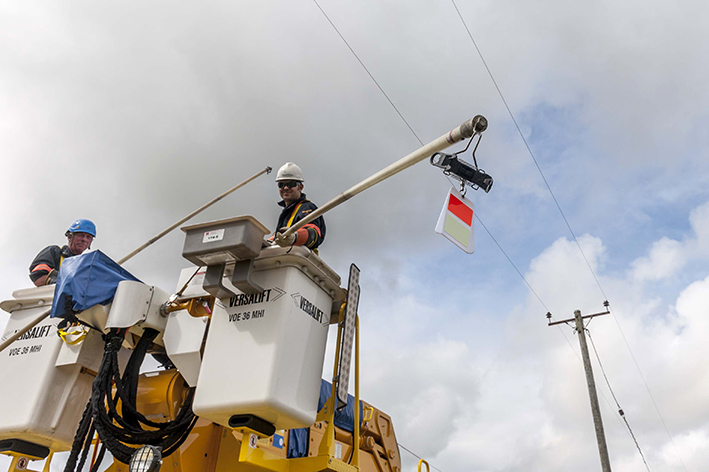Power line research to reduce risk for wildfowl

New research into collisions with overhead power lines could reduce the risk of death for migratory geese and swans in Britain, the Wildfowl and Wetlands Trust (WWT) has announced today (30 August).
A unique partnership between the WWT, Electricity North-West and Lancaster University has seen the installation of more than 150 special bird diverters – special attachments to the power lines that help make them stand out to birds in flight – at Martin Mere WWT in Lancashire. The project will then study the efficiency of different types of diverter, alongside agricultural, weather and landscape factors which affect birds’ flights.
Throughout the winter, the study will closely observe the flight behaviour of geese and swans in and around Martin Mere WWT. It will determine the importance of features such as tree lines, the choice of crops and the wind direction on the birds’ choice of flight line and height.
Dr Eileen Rees, Head of UK Waterbird Conservation for WWT, said: “Tens of thousands of migratory geese and swans make the UK’s wetlands their winter homes. Collisions with power lines are a major cause of death for them, so WWT is delighted to be working with Electricity North-West to make Lancashire, and the UK as a whole, a safer place for them.
“Through this innovative partnership we aim to gather evidence for solutions that work in our modern landscape. As well as reducing the risk to swans and geese, the results of the study should help electricity suppliers throughout the UK provide their service with fewer unnecessary interruptions.”
Martin Mere is one of the most important sites in Britain for Whooper Swan and Pink-footed Goose, with up to 2,500 of the former and 30,000 of the latter wintering on the reserve. Both species are Amber listed as Species of Conservation Concern in the UK, due to the localised nature of the non-breeding populations.
Steve Cox, future network manager for Electricity North West, added: “We hope that the diverters and our subsequent research will go on to help birds and electricity customers across the UK.
“By working closely with Martin Mere WWT we discovered this was a sensitive section of the network as it was located in a known flight path, and we are delighted to be able to help protect these wonderful birds.
“By limiting the chances of any collisions, the special diverters will also reduce any possible impact on customer power supplies.”

Workers from Electricity North-West are fitting the bird diverters to live power lines.
Photo by Martin Birchall (www.wwt.org.uk).

